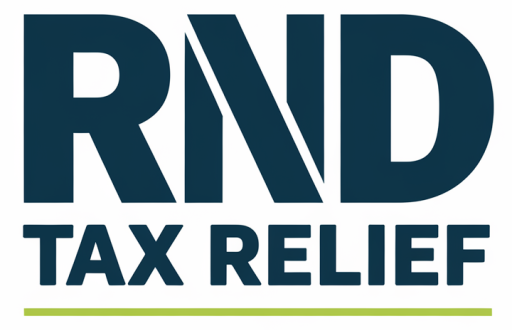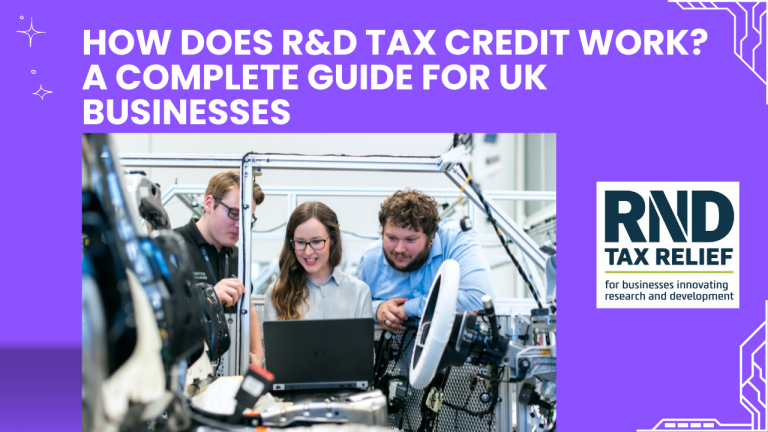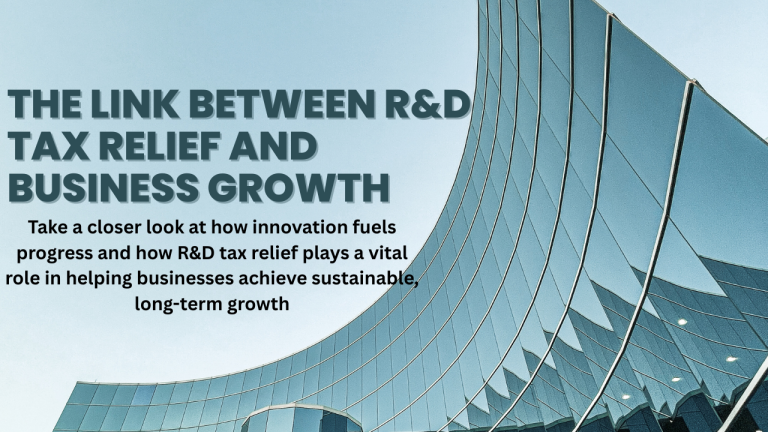R&D Tax Credits Guide for Loss-Making Companies Explained
R&D Tax Credits Guide for Loss-Making Companies Explained
If your business is pouring time, effort, and money into developing new products, software, or ways of working—but not currently turning a profit—you’re not alone. The good news? You might be eligible for government support in the form of R&D tax credits. Yes, even if your company is making a loss right now.
This easy guide will take you through everything you need to know about R&D tax credits for loss-making companies—what they are, how they work, and most importantly, how to claim them. All in plain English.
What Are R&D Tax Credits?
Let’s start with the basics. R&D (Research and Development) tax credits are a UK government incentive. They’re designed to encourage innovation by giving businesses a financial boost when they’re working on new or improved products, processes, or services.
It doesn’t matter if your company is profitable or not. If you’re spending money on R&D activities, you could get a cash repayment or reduce future tax bills through this scheme.
Who Qualifies for R&D Tax Credits?
The scheme mainly applies to businesses that fit the following criteria:
- You’re a UK-registered company
- You’re subject to Corporation Tax
- You’re actively involved in scientific or technological projects
- You’ve invested in staff, contractors, or materials to develop new or improved products/processes
And here’s the key point: You don’t need to be making a profit. In fact, loss-making companies often see significant benefits from this tax relief.
How Do R&D Tax Credits Help Loss-Making Companies?
This is where things get interesting. Typically, businesses can use R&D credits to reduce their tax bill. But if you’re not making a profit, you might not have much tax to pay. So what then?
Well, if your company is making a loss, you can exchange those R&D credits for a cash payment from HMRC. Think of it as the government rewarding your hard work and innovation with a financial lifeline.
Example Time ⎯ Let’s Break It Down
Imagine your loss-making business spends £100,000 on qualifying R&D work. Under the SME scheme (for small and medium-sized enterprises), you may be entitled to a tax credit worth up to 18.6% of that spend. That’s a potential £18,600 in cash—straight into your company bank account.
That could pay salaries, invest in new equipment, or simply keep your business afloat while you continue to innovate.
What Activities Count as R&D?
You might be wondering: “Does the work I’m doing really count as R&D?”
You’d be surprised. It often does. HMRC defines R&D quite broadly. Qualifying projects may include:
- Developing new software or apps
- Creating eco-friendly packaging solutions
- Designing prototypes or new product designs
- Improving manufacturing processes or automating tasks
If your work involves overcoming technical challenges or trying something no one else has done before, there’s a good chance it qualifies.
How Much Money Could You Claim?
There are two main R&D tax credit schemes:
- The SME R&D Scheme – for companies with fewer than 500 staff and either less than €100m turnover or €86m in gross assets
- The RDEC Scheme (Research and Development Expenditure Credit) – usually for larger companies or those involved in grant-funded projects
Under the SME scheme, loss-making companies can receive up to 18.6% of qualifying R&D spend as a cash credit. That’s substantial support, especially for early-stage businesses still getting their feet off the ground.
How to Claim R&D Tax Credits
It might sound tricky, but it’s manageable when broken down:
Step 1: Identify Your R&D Activities
Start by deciding what work counts as qualifying R&D. Look at your projects over the last two accounting years. Was there technical uncertainty? Were you trying to create or improve a process, product, or service?
Step 2: Calculate Costs
- Salaries and wages of R&D staff
- Materials and software used in development
- Any subcontractor or freelancer costs
- Utilities like electricity used during development
Step 3: Write a Technical Narrative
This part tells HMRC what the R&D project was all about. Don’t worry, it’s not about selling your idea—it’s about explaining the challenges, uncertainties, and how you tried to overcome them.
Step 4: Submit Through Your Corporation Tax Return
R&D tax relief is claimed via your CT600 tax return. You can do this yourself, but many companies choose to work with R&D tax consultants to help them make a clear, accurate, and maximized claim.
Important Tip: Don’t Wait Too Long
You can claim R&D credits for the last two completed accounting periods. So if you’ve missed a year or thought you didn’t qualify before—it’s not too late.
Why This Matters for Startups and Tech Companies
Many loss-making companies are in the startup or tech space, where cash flow is tight and growth is a long game. R&D tax credits can act like a safety net or even a launchpad.
Imagine reinvesting thousands of pounds each year into more developers, faster prototyping, or expanding your team—all funded by government support.
Final Thoughts
Running a business without profits can be tough. But if you’re investing in innovation, don’t leave money on the table. R&D tax credits are a powerful source of funding, and they could make a world of difference to your business’s growth and resilience.
Think your company might qualify? Don’t be afraid to ask the question. Whether you reach out to a tax advisor or explore online, just start the conversation.
Your next big break could be helped along by a government scheme designed to reward exactly what you’re doing right now: pushing boundaries and creating something new.
Key Takeaways
- R&D tax credits are available to loss-making companies, not just profitable ones
- You could receive up to 18.6% of eligible R&D costs as a cash payment
- Qualifying activities can include developing new products, software, or processes
- The claim process requires records, cost breakdowns, and a technical project summary
Innovation is hard work. But that doesn’t mean it has to be lonely—or unrewarded. Take advantage of government support. It’s money you’ve earned by daring to build something better.





